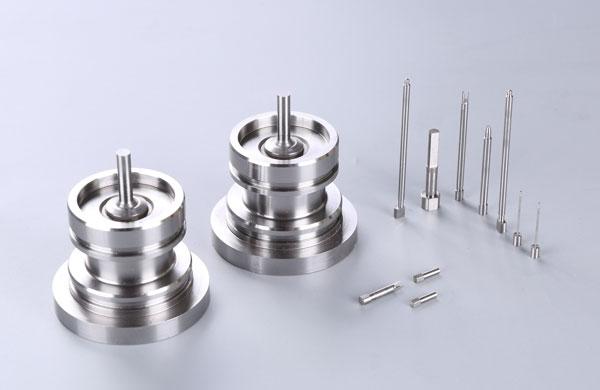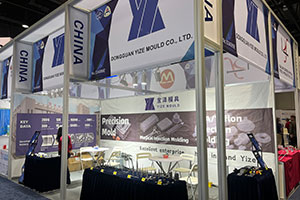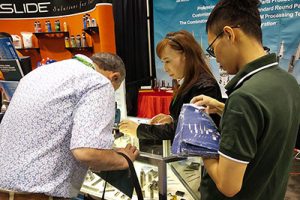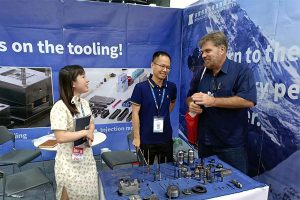Exploration of the Corrosion Resistance of Tungsten Carbide
I. Introduction Tungsten carbide, a high-performance metallic material, plays a pivotal role in modern industry. With its unique properties such as high hardness, wear resistance, and heat resistance, tungsten carbide […]
I. Introduction
Tungsten carbide, a high-performance metallic material, plays a pivotal role in modern industry. With its unique properties such as high hardness, wear resistance, and heat resistance, tungsten carbide has found widespread application in cutting tools, mold manufacturing, aerospace, oil exploration, and many other fields. However, there may be some misconceptions about the corrosion resistance of tungsten carbide. This article aims to provide a comprehensive analysis of the corrosion resistance of tungsten carbide, offering readers accurate and detailed information.
Our factory business: carbide parts, mold parts, medical injection molds, precision injection molds, teflon PFA injection molding, PFA tube fittings. email: [email protected],whatsapp:+8613302615729.
II. Basic Overview of Tungsten Carbide
Tungsten carbide, also known as cemented carbide or high-speed steel, is an alloy material produced through powder metallurgy by combining hard compounds of refractory metals with binder metals. Its main component is tungsten carbide (WC), with metals such as cobalt (Co), nickel (Ni), or iron (Fe) serving as the binder phase. This material not only exhibits extremely high hardness, wear resistance, and heat resistance but also possesses good toughness and machinability.

III. In-depth Exploration of Tungsten Carbide’s Corrosion Resistance
- Characteristics of Corrosion Resistance
The corrosion resistance of tungsten carbide is closely related to its composition, structure, and operating environment. Generally speaking, tungsten carbide has good corrosion resistance and can withstand the erosion of acidic, alkaline, and other corrosive media. However, tungsten carbides with different compositions have varying levels of adaptability to corrosive environments. For example, WC-Co tungsten carbide performs better in acidic environments but is relatively less effective in alkaline environments.
- Revelations from Experimental Data
To accurately grasp the corrosion resistance of tungsten carbide, researchers have conducted extensive experiments. Experimental data shows:
- WC-Co tungsten carbide exhibits a low corrosion rate in acidic solutions such as hydrochloric acid (HCl) and sulfuric acid (H2SO4), demonstrating good corrosion resistance. This is attributed to the formation of a dense oxide film on the surface of WC-Co tungsten carbide in acidic environments, effectively blocking corrosive media.
- WC-Ni tungsten carbide has relatively strong corrosion resistance in alkaline solutions (such as KOH). This is because the Ni element can form a stable oxide film in alkaline environments, protecting the alloy surface.
- WC-10Ni3Al tungsten carbide exhibits excellent corrosion resistance in acidic, alkaline, and neutral salt solutions (such as NaCl). This is due to its unique composition and structure, which enable the alloy surface to form a stable oxide and hydroxide film, effectively resisting the erosion of corrosive media.
- Verification through Practical Applications
The corrosion resistance of tungsten carbide has been fully verified in fields such as oil exploration and chemicals. For example, drill bits and drilling tools made of tungsten carbide in oil drilling, as well as valves, pipes, and other equipment in chemical production, can operate stably for a long time due to the excellent corrosion resistance of tungsten carbide.
IV. Ways to Improve the Corrosion Resistance of Tungsten Carbide
Although tungsten carbide has good corrosion resistance, it may still be affected under specific conditions. To enhance its corrosion resistance, the following measures can be taken:
- Optimize alloy composition: Adjust the content and ratio of elements such as WC, Co, and Ni to improve corrosion resistance.
- Improve heat treatment processes: Adopt appropriate heat treatment processes such as vacuum sintering and hot isostatic pressing to improve the density and uniformity of the alloy, thereby enhancing its corrosion resistance.
- Surface treatment: Apply protective coatings on the alloy surface through methods such as spraying and electroplating to enhance corrosion resistance.
V. Conclusion
In summary, tungsten carbide has good corrosion resistance and can withstand the erosion of various corrosive media. However, its corrosion resistance is influenced by multiple factors. In practical applications, the appropriate tungsten carbide material should be selected based on the specific environment and requirements, and corresponding measures should be taken to improve its corrosion resistance. With advancements in technology and in-depth research, the corrosion resistance of tungsten carbide will continue to improve and refine.






